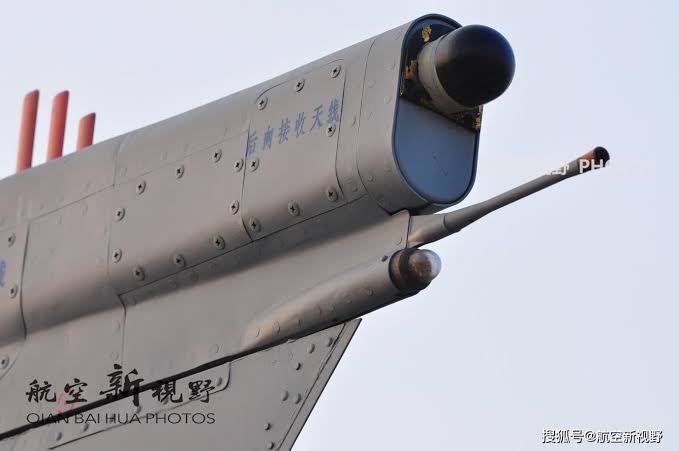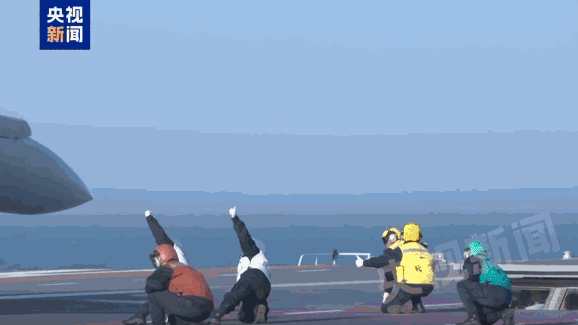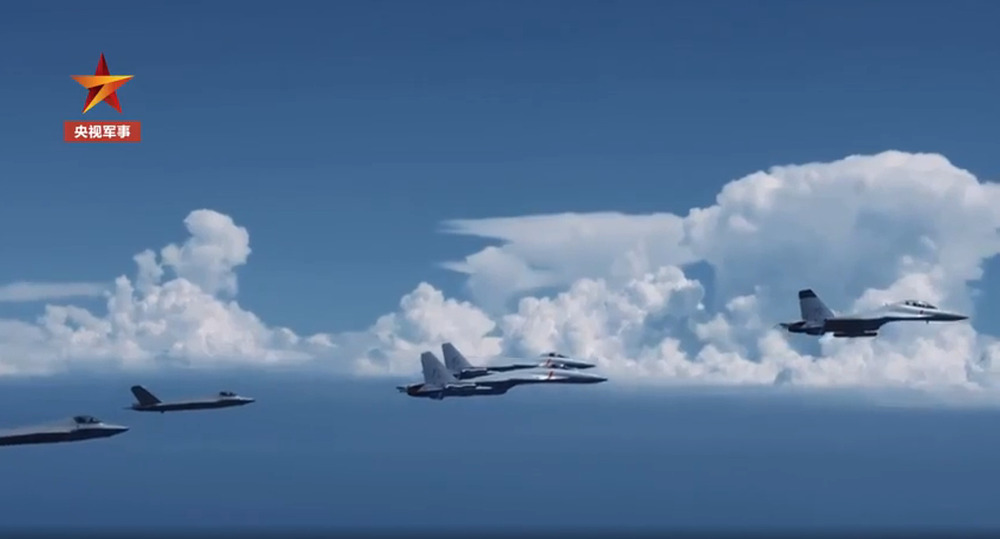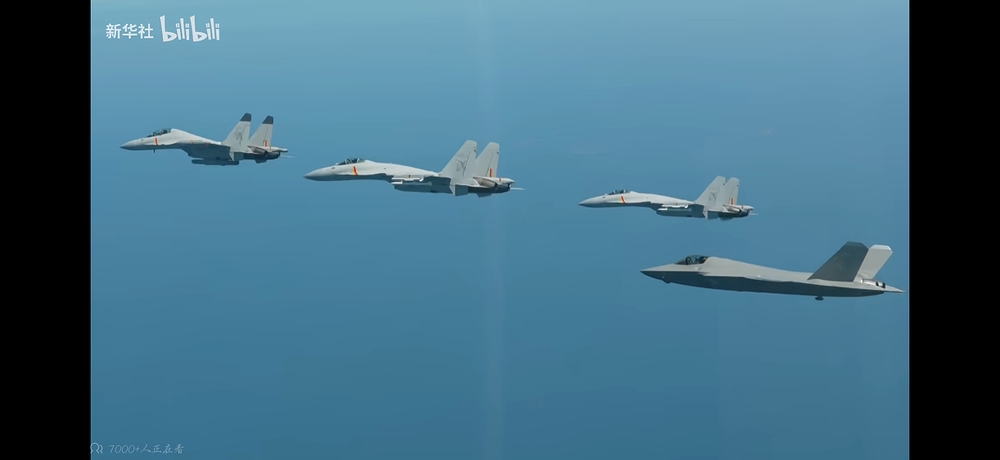Interesting readup of chinese su-27 history from NIIP (russian maker of radio electronics)
Spoiler
It was with the Chinese order 15 years ago that the export career of fighters of the Su-27 family began, which has received such widespread development in recent years. The Russian-Chinese contract, concluded in 1991, provided for the supply of 24 fighters to this country (20 single-seat Su-27SK and four two-seat Su-27UBK). The first export Su-27SK and Su-27UBK were not much different from the Russian Su-27 and Su-27UB. Their main features were the use of a modified state identification system, a simplified electronic countermeasures system and an export version of the N001E radar.
Subsequently, in accordance with the wishes of the customer, the design of the fighters was modified to take into account an increase in the maximum take-off weight, and unguided means of hitting ground targets were included in the range of weapons. The Su-27SK became capable of using 100, 250 and 500 kg aerial bombs, incendiary tanks, KMGU small cargo containers and 80, 122 and 266 mm unguided missiles. The maximum mass of the combat load placed on ten hardpoints was 8000 kg. At the request of the Chinese side, the Su-27SK was to be operated with full refueling of fuel tanks and maximum combat load, while the take-off weight of the aircraft reached 33,000 kg (the first Su-27 and Su-27SK had a maximum take-off weight limited to 28,000 kg). In this regard, the chassis was strengthened.
The first twelve Su-27s (eight single-seat and four «spark») arrived in China in June 1992. In November of the same year, a second dozen Su-27SKs were flown non-stop from the KnAAPO factory airfield to Wuhu airfield in China. Soon, all 24 aircraft ordered were adopted by the 3rd Aviation Division of the Chinese People’s Liberation Army Air Force (PLAAF) based here.
In 1995, a new contract was concluded with the PRC for the supply of a second batch of fighters, and the following year another 16 single-seat Su-27SK and six two-seat Su-27UBK entered the country. The total cost of the 46 fighters acquired by China (including the necessary ground equipment, weapons and spare parts, as well as training and training of Chinese Air Force personnel) is estimated at $1.5—1.7 billion.
The People’s Republic of China, interested in modernizing its air force fleet and with extensive experience in producing Soviet-designed aircraft at its aircraft factories, also expressed a desire to obtain a license from Russia to produce the Su-27 on its own. After much negotiation, the Russian government gave permission for such a deal, and on December 6, 1996, a contract was concluded, estimated at $2.5 billion, which provided for the assembly of 200 Su-27SK aircraft at the Shenyang plant over five years. China has committed itself not to export its Su-27s to third countries. Moreover, the first aircraft were to be assembled from kits supplied by the Russian plant in Komsomolsk-on-Amur — manufacturer of single-seat Su-27sand in the future, parts and assemblies were supposed to be produced by the Chinese aviation industry (however, things practically never came to this).For the production of on-board engines the license did not apply to radio-electronic equipment and weapons for the Chinese J-11s, and they were supplied under contract from Russia.
A complete set of technical documentation for the licensed production of fighters was transferred to the PRC by the summer of 1997. The first Su-27SK assembled in Shenyang, which received the name J-11 here, took off for its first flight on December 15, 1998. Locally assembled aircraft began to enter service 1st PLA Air Force Division, based at Anshan airfield near the manufacturer.
Due to the planned sharp increase in the fleet of single-seat Su-27 type fighters, the PLA Air Force was exacerbating the problem of training Chinese pilots for these aircraft. Since the Chinese Air Force had only a dozen two-seat Su-27UBK combat training fighters, it was decided to purchase an additional batch «sparok» from Russia. As a result, in December 1999, a contract was signed for the supply during 2000—2002. to China by the Irkutsk Aviation Plant another 28 Su-27UBK aircraft. The vehicles were delivered in three batches: in 2000 - 8 aircraft, in 2001 - 10 and in 2002 — 10 final.
According to foreign press reports, until the beginning of 2004, KnAAPO supplied 105 aircraft kits to Shenyang for licensed assembly of the J-11, and, apparently, all of these aircraft entered service with the PLA. Thus, in total, the Chinese Air Force received almost 180 Su-27SK (J-11) and Su-27UBK fighters. According to the website www.sinodefense.com, by the beginning of this year these aircraft were already operating in seven air divisions of the PLA Air Force: 1st in Anshan (Shenyang Military Region), 2nd in Suixi (Guanzhou Military Region), 6th in Yingchuan (Lanzhou Military Region), 7th in Zhanjiakou (Beijing Military Region), 14th in Zhangshu (Nanjing Military Region) 19th at Zhenzhou (Jinan Military Region) and 33rd at Baishiya (Chendong Military Region), and at the PLAAF Test and Training Center at Kanzhou (Beijing Military Region).
“Multi-purpose Chinese”
Having mastered the operation of Su-27SK air superiority fighters imported from Russia and began producing such aircraft under Russian license at its plant in Shenyang, the People’s Republic of China in the late 90s. expressed a desire to order «Sukhoi Design Bureau» and KnAAPO a batch of modernized aircraft with broader combat capabilities.
Unlike the Su-27SK, the new vehicles were supposed to be able to hit ground and sea targets with high-precision weapons. The introduction of the latest medium-range missiles «air—air» with active RVV-AE radar homing heads into the fighter’s armament was intended to increase combat effectiveness in air combat.
The complex of on-board equipment of the aircraft had to undergo significant modernization.
Another demand of the Chinese side for the modernized «Sukhoi» was an increase in flight range and duration, which was supposed to be achieved through the introduction of an in-flight refueling system and a slight increase in the capacity of internal tanks.

In addition, it was specifically stipulated that the aircraft should be able to take off with full refueling of fuel tanks and a full combat load on external slings. The maximum take-off weight of the modernized aircraft with a combat load of 8000 kg and a fuel reserve of 9500 kg could be 38,800 kg, which required strengthening the landing gear and main structural elements of the airframe.
Taking into account the increased volume of combat missions, as well as the possibility of performing long flights with in-flight refueling, it was decided to order the modernized multi-role fighter in a two-seat version. This, in turn, would make it possible to effectively use it for training new crews.
The modernized aircraft, which meets all these requirements, was designated Su-Z0MKK. The main executor of the new Chinese contract, signed in 1999, was identified by KnAAPO as an enterprise with extensive experience in cooperation with the PRC in the supply of previous batches of Su-27SK fighters and the development of licensed production of these aircraft in Shenyang. By the way, it was KnAAPO that initiated the Su-Z0MKK project and independently, using the latest information technologies, completed a significant amount of design work on new airframe units.
The development of a new set of equipment for the Su-Z0MKK was entrusted to the Ramensky Instrument-Making Design Bureau (RPKB). Unlike the Su-27, the Su-Z0MKK avionics complex began to be built on a new principle — the principle of open architecture, based on multiplex information exchange channels and modern digital computers. Integration of all on-board equipment, development of new software, as well as the main new elements of the complex — on-board computers BCVM-486, color multifunctional indicators MFI-10-5 on liquid crystals with a push-button frame with a working field size of 6x8 inches and some other systems — was carried out in RPKB.
Weapons control system — the main element of the Su-Z0MKK avionics complex - includes two main subsystems: the SUV-VE class «air—air» weapons control subsystem and the SUV-P class «air—surface» weapons control subsystem, which also provides display of all sighting and navigation information on four multifunctional indicators on the cockpit instrument panels (two indicators each in the front and rear cockpits). Interacting with these systems is the L-150 electronic reconnaissance station from the REP complex, which provides target designation to the homing heads of the Kh-31P anti-radar missiles and the control equipment of the Kh-59ME missiles with a television-command guidance system (in the APK-9E suspended container).
The SUV-VE weapon control subsystem of the Su-Z0MKK aircraft includes the RLPK-27VE radar sighting system with the N001VE radar, the OEPS-30 optical-electronic sighting system, the SEI-31-10 unified display system with an indicator against the background of the windshield ILS-31 and state identification system interrogator. OEPS-30, in turn, includes the optical location station OLS-30 and the helmet-mounted target designation system (NSC) «Sura-K». Despite the similar composition to the SUV-27 weapons control system of the Su-27SK fighter, most of the SUV-VE elements of the Su-Z0MKK — aircraft are new or modernized.
Thus, the N001VE radar (developed by the B.V. Tikhomirov Research Institute of Instrument Engineering) is a modified version of the N001E radar of the Su-27SK aircraft, supplemented with a channel «air— surface». For this purpose, the aircraft is additionally equipped with a reprogrammable digital signal processor «Baget-55», a channel receiver «air—surface», and a universal computer system MVK-RL. Unlike the base radar, N001VE additionally provides the use of RVV-AE «air—air» missiles, as well as all-weather detection, measurement of the coordinates of radio-contrast ground and surface targets in real beam mapping modes, with Doppler beam conditioning and with a synthetic aperture, selection of ground and surface targets and measuring ground range. The detection range of an air target of type «fighter» at the N001VE radar reaches 90-110 kmand a ground (surface) target ranges from 70-80 km (target type «group of tanks» or «missile launcher»), up to 200-250 km (target type «aircraft carrier»).
Instead of the optical ones used on the Su-27 the OLS-27 («36Sh») location station and helmet-mounted target designation system «Shchel-ZUM» on the SU-Z0MKK aircraft use the new OLS-30 («52Sh») and NSC «Sura-K» with new software and algorithmic software and wider combat capabilities. For example, OLS «52Sh» (developed by TsKB «Geophysics») has an increased tracking range of an air target based on its thermal radiation from 50 to 90 km and an increased range of measuring distances to an air and ground target, respectively, with a laser rangefinder.
The SUV-P class «air-to-surface» weapons control subsystem provides the use of guided missiles «air—to-surface» X-29T (TE), X-59ME, X-31P, KAB-500Kp and KAB-1500Kr adjustable bombs. The subsystem includes four on-board digital computers BCVM-486, four color multifunctional liquid crystal indicators MFI-10-5, a weapon control system SUO-ZOPK and a satellite navigation system A-737, interfaced with international GPS systems (NAVSTAR/GLONAS).
Other modified avionics systems of the Su-Z0MKK aircraft include a modified remote control system, a flight navigation system, as well as more modern radio communication and electronic countermeasures systems.
Deliveries and improvements
The first two-seat multirole fighter Su-Z0MKK, which received an onboard №501, was built at KnAAPO and lifted into its first flight from the factory airfield by test pilot «Sukhoi Design Bureau» Vyacheslav Averyanov on May 19, 1999. In the summer of the same year, the assembly of the second production was completed in the production of KnAAPO Su-30MKK, which received onboard №502. It was soon followed by two more cars (№503 and 504). All of them, together with the T10PU-5 flying laboratory, by the end of 2000 had successfully passed tests at the GLITs training ground of the Russian Ministry of Defense in Akhtubinsk. By this time, KnAAPO had produced the first batch of ten serial Su-30MKK, which were solemnly handed over to the customer on December 20, 2000. They flew to Wuhu airfield and became part of the 3rd Air Division of the PLA Air Force. During 2001, the and, were builtin strict accordance with the delivery schedule, the remaining 38 Su 30MKK aircraft provided for in the contract were sent to China.
Satisfied with the new acquisition and the efficiency of the Russian side (only two years passed from the time the contract was concluded to the full completion of its implementation), the Chinese authorities in December 2001 ordered KnAAPO a second batch of 38 two-seat Su-30MKK multirole fighters for delivery over the next two years. In strict accordance with the obligations assumed, in August and December 2002, the first 19 Su-30MKK were delivered to the customer in two batches. The remaining 19 aircraft under the second contract were delivered to China during 2003. According to www.sinodefense.com, by 2006 these aircraft had been mastered by pilots of three PLA Air Force air divisions: the 3rd in Wuhu and the 29th in Quzhou (both are located in the Nanjing military region)as well as the 18th Division in Changsha (Guanzhou Military Region) and the testing and training center in Kanzhou near the capital of the People’s Republic of China.
Soon, the Chinese side expressed a desire to increase the number of such aircraft in its armed forces, and this time the aircraft were to enter service with the PLA Navy aviation. In January 2003, a batch of 24 modified two-seat multirole Su-30MK2 fighters with expanded combat capabilities was ordered for them. For example, their weapons included Kh-31A anti-ship missiles with active radar homing heads. For this purpose, the aircraft’s radar sighting system underwent certain modifications: additional units (in particular, an additional processor «Baget-55») were introduced into the modified SUV-VEP weapons control system. Deliveries of Su-30MK2 aircraft to the PLA Navy began in February 2004 and were successfully completed before the end of the same year.
According to www.sinodefense.com, these aircraft entered service with the 10th Air Regiment of the 4th Division of the PLA Navy in Ningbo in Zhejiang Province (Eastern Fleet of the Chinese Navy).


As a result, the total number of aircraft of the Su-27/Su-30 family in the PLA reached approximately 280 aircraft, of which more than 60% (over 170 aircraft) were direct deliveries from Russia.
Mastering the operation of the multi-purpose Su-30MKK and Su-30MK2 in the PLA put on the agenda the task «to bring up» to their level the previously received Su-27SK and J-11, which were much more modest in combat capabilities. As reported in the press, work is currently underway in China to modernize them using technical solutions implemented on the Su-30MKK. According to experts, the corresponding contract was signed some time ago with «Rosoboronexport», and one of the main implementers of the modernization program and supplier of kits for modifying Chinese fighters is the Instrument Engineering Research Institute named after. V.V. Tikhomirov together with the State Ryazan Instrument Plant.
The weapon control system of the Chinese Su-27SK is being modified to the SUV-VE level (as on the Su-30MKK), and at the same time an additional weapon control system of the SUV-PE class «air-surface» is being introduced into the on-board equipment. Thanks to this, new RVV-AE missiles «air—air» and high-precision means of hitting ground targets with television homing — Kh-29T (TE) missiles, KAB-500Kr adjustable bombs, as well as Kh-31P anti-radar missiles are being introduced into the fighter’s range of weapons, etc. The instrumentation in the aircraft cabin is being replaced: instead of most electromechanical instruments, as on the Su-30MKK and Su-30MK2, two multifunctional liquid crystal indicators MFI-10-6M measuring 6x8 inches and a multifunctional remote indicator MFPI-6 are installed.A number of other equipment modernization measures are being carried out, thanks to which the single-seat Su-27SK (J-11) is approaching the Su-30MKK in its capabilities. According to some reports, more than fifty single-seat fighters have already undergone similar modifications in China.
Chinese prospects for the Su-33
The PLA Navy has long dreamed of receiving aircraft carriers. This topic has been actively studied for more than 20 years, and, according to some reports, back in 1992, China launched a program to design its first aircraft-carrying ship. The foreign press has repeatedly reported that in 1999, the Project 9935 aircraft carrier with a displacement of about 48 thousand tons was laid down at the Shanghai Shipyard. True, in June last year, official China denied rumors about this, calling them «unfounded». According to other sources, the laying of the first Chinese aircraft carrier should take place in 2006—2007. Be that as it may, it is known for certain that Chinese specialists since the 80s. We were intensively familiarized with the state of work on aircraft carrier topics in France, Italy, Spain, Russia and Ukraineconsidering various options for purchasing decommissioned aircraft carriers for detailed study and, as a result, obtaining experience for subsequent in-house work in this area.
The first Chinese managed to purchase an Australian aircraft carrier «Melbourne» in 1994 for $1.4 million as scrap metal, which was towed to China, divided into separate units and carefully studied by specialists. Then, in 1998, for $5 million, a heavy aircraft-carrying cruiser (TAVKR) «Minsk», previously sold to it by Russia for scrap, was purchased from South Korea. After careful study (and the ship went to new owners with a large number of undismantled electronic weapons systems) «Minsk» was turned into a museum ship and entertainment center «Minsk World» near Shenzhen near Hong Kong. Several million tourists have already visited it. Another former Russian TAVKR of the same project — «Kyiv» — was acquired for $8.5 million in 2000 by a Chinese company «Tianma» through an Austrian intermediary company.Contrary to the contract, it was never cut up for scrap and is now also turned into a museum ship in the port of Tianjin. There is no doubt that before this it was also thoroughly studied by Chinese shipbuilders and the military.
But perhaps the main «aircraft carrier» acquisition of the PRC is the purchase in 1999 for $20 million through a company registered in Macau in Ukraine, TAVKR «Varyag» —, which was only 30% unfinished by Russia four years earlier, of the second ship of Project 1143.5, following the current only aircraft carrier in the Russian Navy «Admiral Kuznetsov». After an epic of passage from the Black Sea that lasted almost two years, on March 4, 2002 «Varyag» was finally brought to the pier of the Chinese naval base Dalyan (for more details about this — see «Takeoff» №12/2005, p. 24—31). As recent events show, despite previous official assurances, no one is going to turn it into another attraction. In July 2005, the hull «Varyaga» was towed to a ship repair and shipbuilding plant located next to the naval base, and work began to boil on itin which, according to some evidence, Ukrainian shipbuilders from the Nikolaev shipyard, where he was born at one time, are actively participating. Many experts agree that «Varyag», if it does not become the first Chinese full-fledged aircraft carrier, will at least be used to test various technical solutions for future aircraft-carrying ships of the PLA Navy. In particular, it is assumed that the first Chinese deck pilots will be able to begin training there.it is assumed that the first Chinese deck pilots will be able to begin training there.it is assumed that the first Chinese deck pilots will be able to begin training there.
What aircraft will be able to be based on «Varyag» and future Chinese aircraft carriers? According to experts, there are most likely two options —we can talk about either a carrier-based version of the new Chinese J-10 fighter, or an aircraft of the Su-33 type, which can either be independently created in China on the basis of the «land-based» Su-27SK mastered here in production under a Russian license, or ordered directly from Russia. Given a number of factors, many are inclined to believe that the latter option is the most likely. In addition, information recently appeared on Chinese Internet sites that the process of negotiations on the possible supply of Russian naval fighters «Sukhoi Design Bureau» to equip air groups of future Chinese aircraft carriers is approaching its final stage, and the signing of the first contract is possible soon. According to experts,in total, the Chinese Navy may need up to a hundred naval multirole fighters in the next 5-10 years, incl. up to six dozen single-seat Su-33Ks and up to four dozen two-seat aircraft, which can be created on the basis of the experimental Su-27KUB aircraft. Deliveries of the first aircraft could begin before 2010 and continue for the next five years or more.
Single-seat multi-role naval fighter Su-33K (presumable name), most likely, it will be created as a modification of the production Su-33 aircraft. 26 such vehicles were produced in 1992-1995. at KnAAPO, most of them are currently in service with the 279th separate naval fighter aviation regiment of the Northern Fleet of the Russian Navy and are operated on board the TAVKR «Admiral of the Fleet of the Soviet Union Kuznetsov». However, unlike the Russian prototype, the «Chinese» version of the Su-33 is likely to have more advanced avionics and more diverse weapons, ensuring its more effective multi-purpose use.
It is believed that the Su-33K will be able to use a modernized weapons control system «air—air» of the SUV-VEP1 type and a weapons control system «air—surface» of the SUV-PE type, a two-screen display cabin system, new navigation systems, communications, REP and parameter control — i.e. almost the same what is installed on the Su-30MK2 two-seat aircraft already exported to China and the proposed modernized single-seat Su-27SKM. In general, the Su-33K may be similar to them in terms of the composition of its weapons: compared to the Su-33, it will most likely additionally include RVV-AE «air—air» missiles, Kh-31A anti-ship missiles, Kh-31P anti-radar missiles, KAB-500Kr adjustable bombs, etc. There are no such weapons on Russian Su-33s yet. And in the future, the Su-33K can be equipped with systems and weaponswhich are supposed to be equipped with the promising multirole fighter Su-35. A two-seater aircraft, which is planned to be created on the basis of the Su-27KUB, will be able to have a similar composition of equipment and weapons. For example, it has already been determined that the basis of its weapons control system will be a radar with a passive phased array «Irbis-E», developed for the Su-35 at the Research Institute named after. V.V. Tikhomirov.
The power plant of the ship’s fighter is also expected to be modernized. To ensure safe operation on the ship, serial Su-33s use AL-31F ser. 3 with an additional so-called «special mode» of increased thrust (12800 kgf), the use of which significantly reduces their service life. The new machines will be able to use modernized engines with increased thrust to 13,500 kgf and increased service life. There are two options here: one is proposed by the developer of all AL-31F engines - NPO «Saturn». The company has already tested a modernized engine on stands, the performance of which is improved by using a digital controller. The second option is offered by the traditional supplier of AL-31F engines in China - MMPP «Salyut». Its AL-31F-M1 engine, which has similar characteristics,most recently, in October 2006, he completed state tests on board the Russian Air Force Su-27SM fighter and was recommended for adoption. Considering the extensive experience of cooperation «Salut» with the PRC, it can be assumed that his proposal will have a certain advantage. And in the longer term, both enterprises are ready to provide the customer with their options for the next stage of modernization of the AL-31F with a large volume of technical improvements and even higher characteristics.And for the longer term, both enterprises are ready to provide the customer with their options for the next stage of modernization of the AL-31F with a large volume of technical improvements and even higher characteristics.And for the longer term, both enterprises are ready to provide the customer with their options for the next stage of modernization of the AL-31F with a large volume of technical improvements and even higher characteristics.







